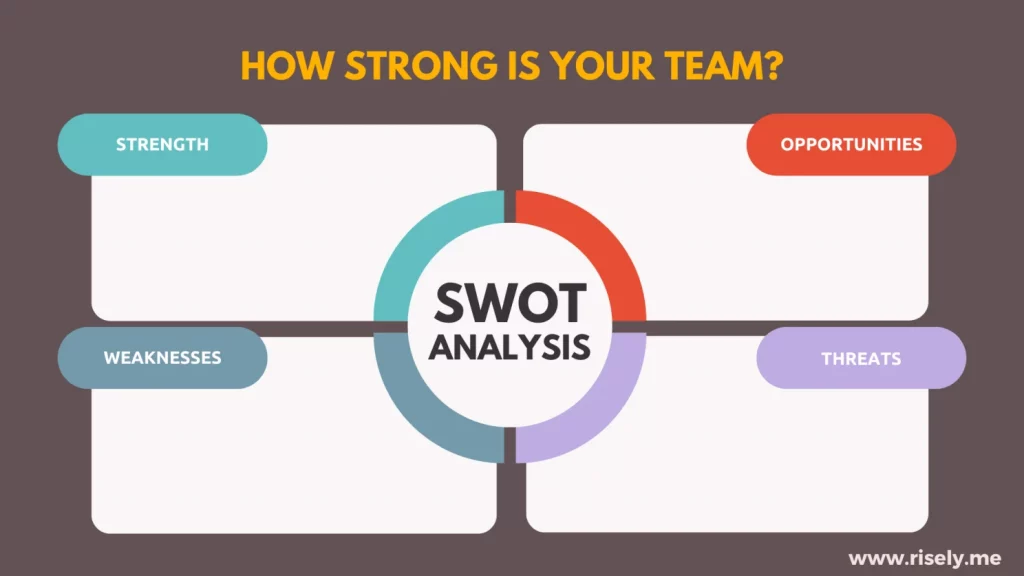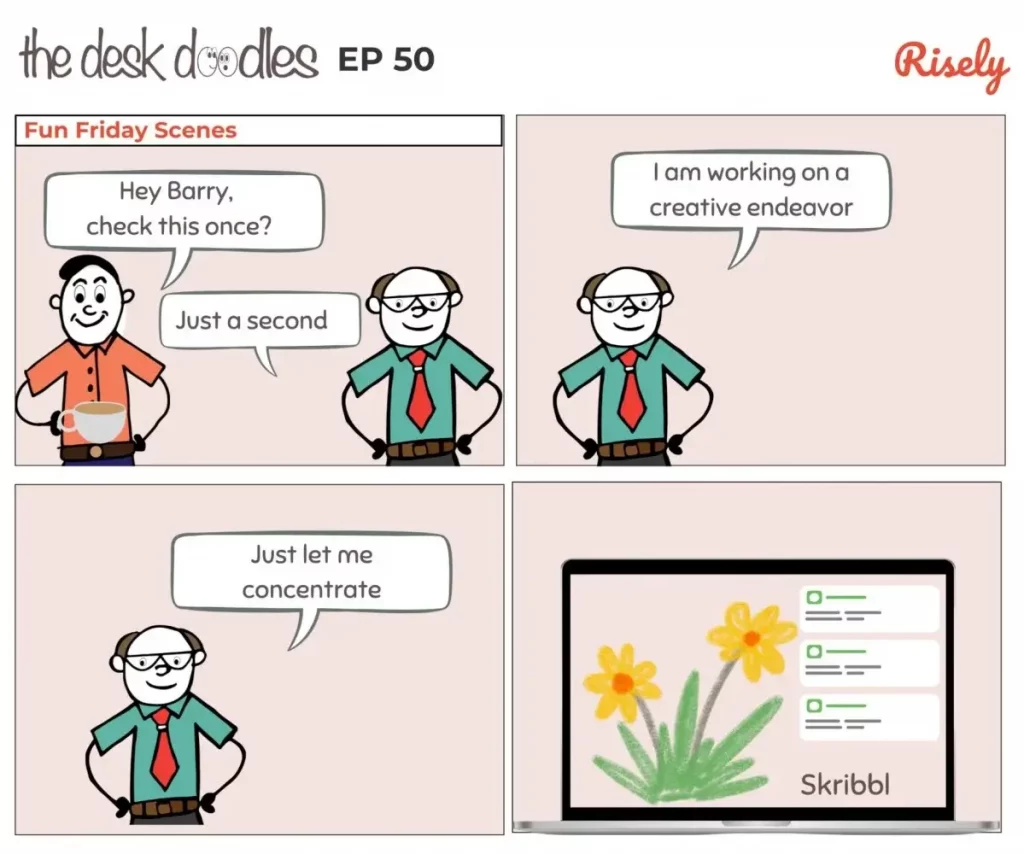Discover Opportunities and Threats for Your Team
Have you noticed any issues with your team lately?
It could be anything. Missed deadlines or unmatched performance expectations. Or is there something new coming up that could threaten your team? AI is one such change that is set to disrupt many industries and contribute to the evolution of how we envision work. In the face of uncertainties like these, it is prudent to consider safeguards. But where do we even begin?
SWOT Analysis of a team
You must have heard of a SWOT analysis. To recap quickly, it stands for:
- S – strengths
- W – weaknesses
- O – opportunity
- T – threats
In sum, it paints a picture of where you stand and what factors, both positive and negative, you should consider while moving forward.
How do you conduct the swot analysis of your team?
Before you begin, do these three things:
- Study your team properly. You might want your team to join in this activity for more perspectives
- Define your broad goals
- Draw four quadrants as shown below

Looking inside
The first two parts of a SWOT analysis, the strengths, and weaknesses, are derived internally. Your strengths and weaknesses are your own – which is good because you can better manipulate them.
A few areas of strengths you should consider for your team include:
- Skills and expertise of team members
- Successful projects and achievements
- Unique resources or tools available
- Strong relationships and communication within the team
Similarly, when looking for weaknesses in your team, think of the opposite:
- Skill gaps or lack of expertise
- Areas where the team has failed or underperformed
- Communication barriers or collaboration issues
- Resource constraints
Turning the gaze
Once you know the internal aspects, let’s move to the latter two in your team’s SWOT analysis: opportunities and threats. These two are closely tied to external factors often outside your control.
What factors impact threats and opportunities for your team?
- Emerging market trends or technologies
- Potential partnerships or collaborations
- New projects or roles the team can take on
- Organizational changes like restructuring
- New policy and legal developments
Whether it helps or hurts depends heavily on your context. One change can impact multiple industries, each differently. So don’t rely on quick views. Think of the second-order impacts for your team and start putting them down on paper.
Okay, what next after a team’s SWOT analysis?
The SWOT analysis of a team can show you effectively where you stand. Next up, you can gauge your readiness for the world you’ll be shaping in the time to come. As a manager, you have twin roles:
- Level up on the strengths to make the most of opportunities
- Reduce weaknesses to minimize threats
You can start by setting priorities. Define what areas your team will handle first and put them down in an action plan so that you have the capabilities required to entertain the threat or opportunity accordingly.
For instance, if you are a manager who feels that AI will take over your job, look for opportunities: What can AI do for you instead? AI can help you cut down on time spent on manual routine tasks. AI can be your coach for effective leadership. These are the skill gaps that you can fill.
On the flip side, there are strengths that only you can leverage, like interpersonal skills to resolve conflicts well or demonstrate care for your team members.
Take the same approach for your team’s challenges. Think about what you can do to bridge the gaps and what makes you special.
Need help? Talk to AI coach Merlin about your team’s situation. It’s free for you.
How’s the fun Friday at the Doodle Office?


